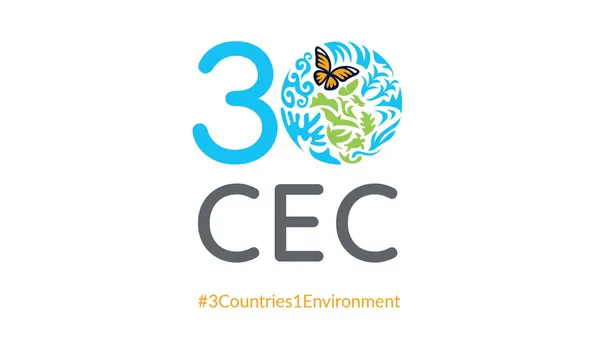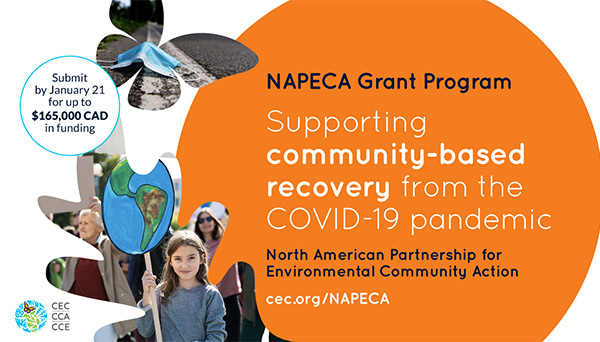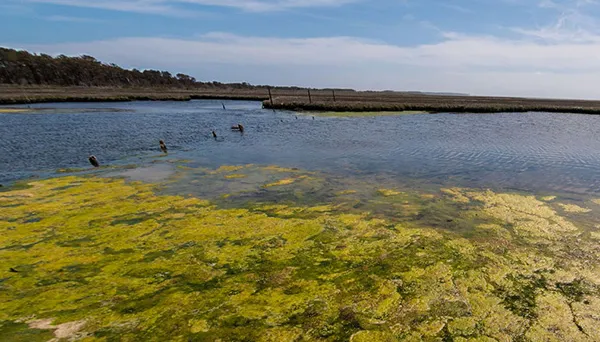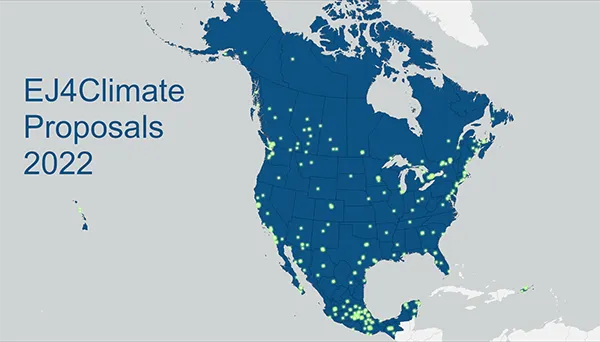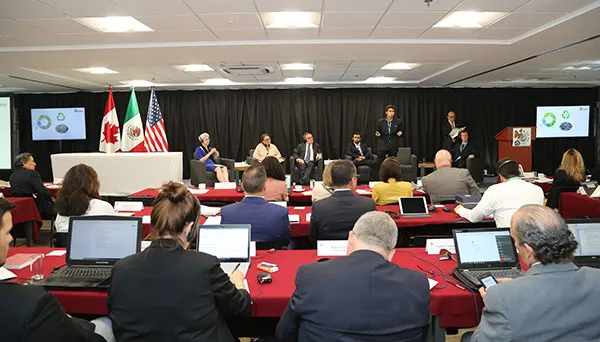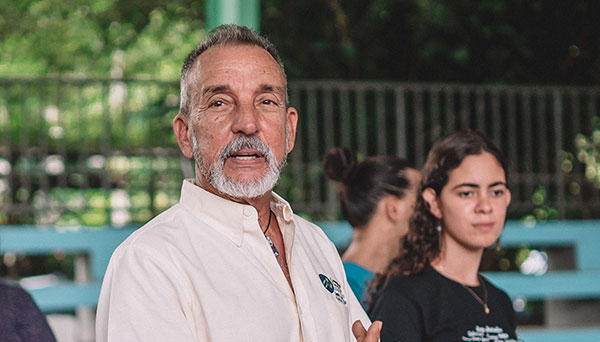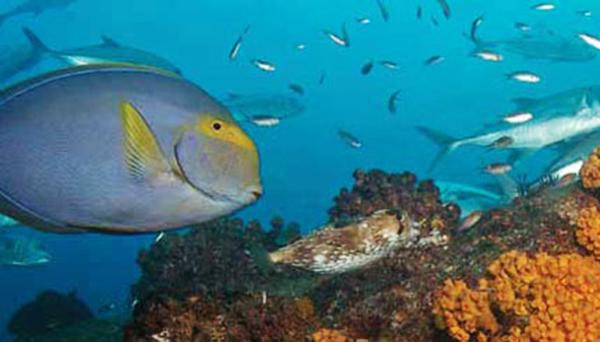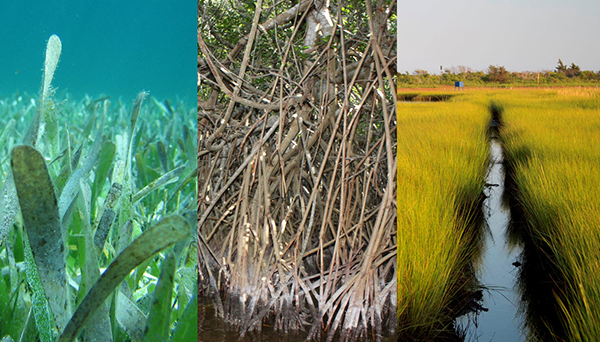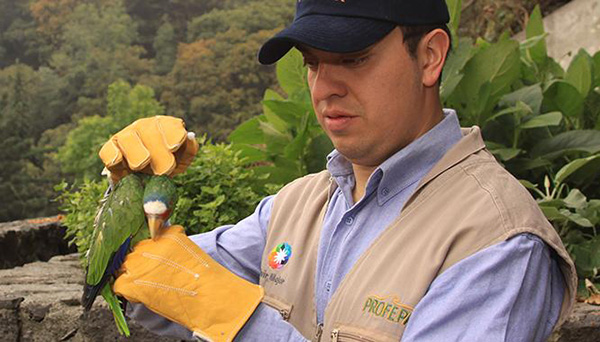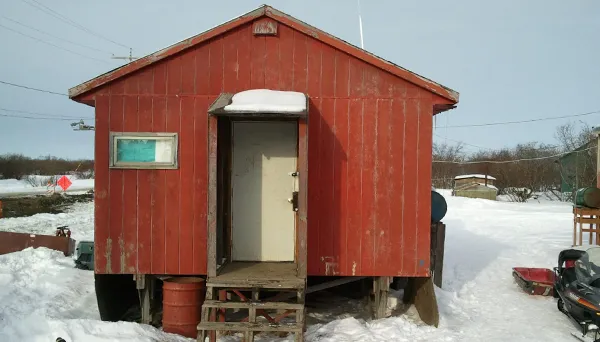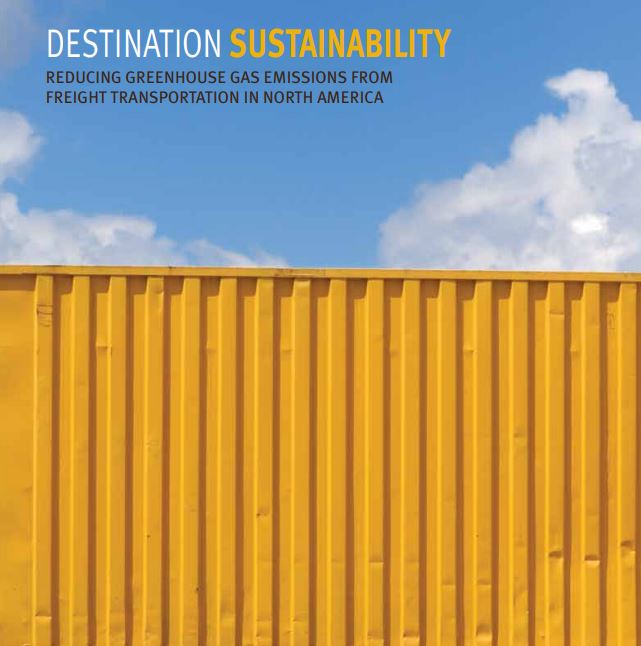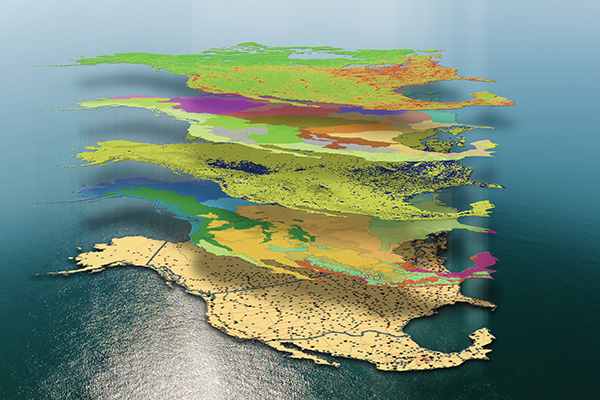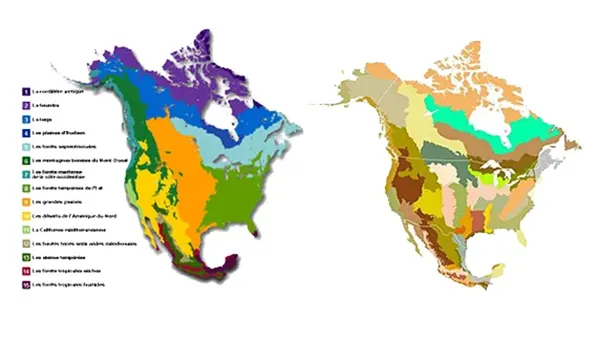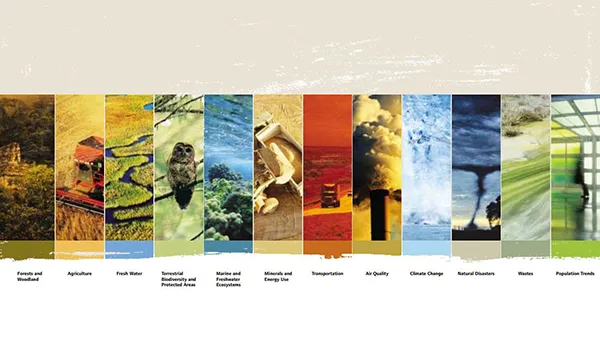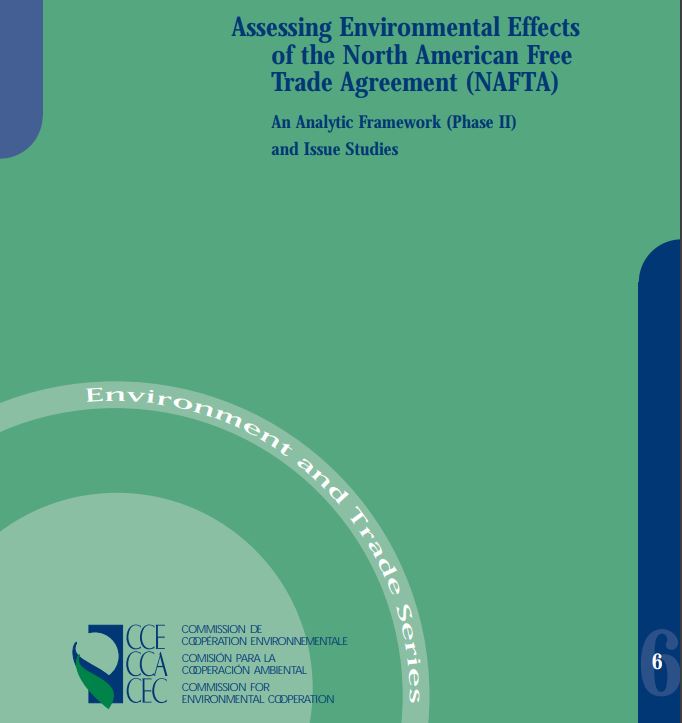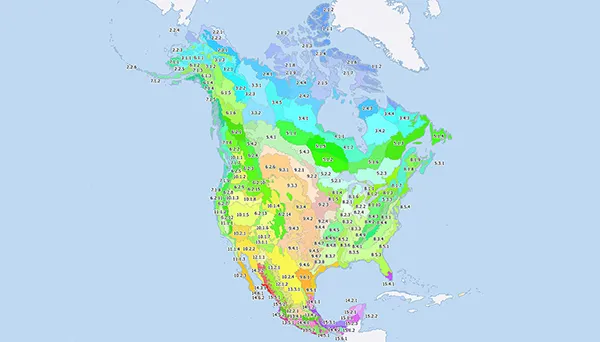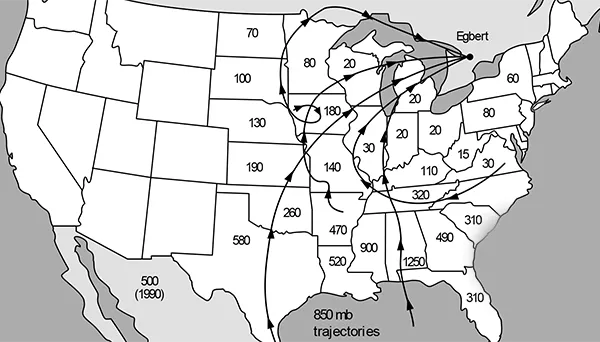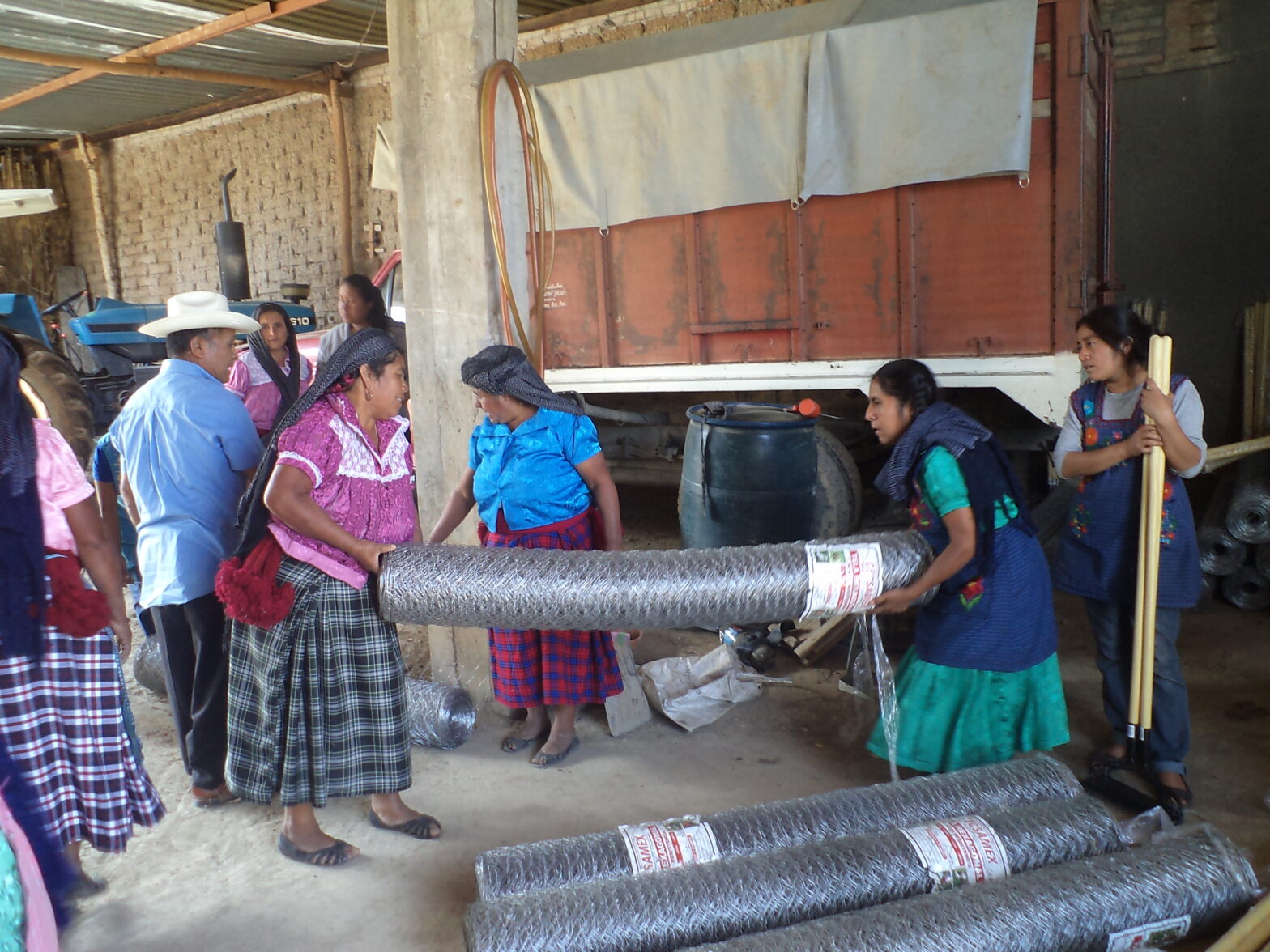The CEC is Turning 30! Celebrating Three Decades of Regional Environmental Cooperation
September 14, 2023
Montreal, 14 September 2023— Are you ready to celebrate—and accelerate? We’ve got big news! The Commission for Environmental Cooperation (CEC) is turning thirty! This upcoming year we’ll be recognizing some of the key milestones in North American environmental cooperation and building on our history of collaboration to accelerate urgent action to address the triple planetary crises of climate change, biodiversity loss and pollution.
Read MoreCEC impact
The CEC has provided technical information to support decision making
Our report, Health impacts of air pollution on morbidity and mortality among children of Ciudad Juarez, Chihuahua, Mexico, provided technical support for the development of the NORMA Oficial Mexicana NOM-172-SEMARNAT-2019, Lineamientos para la obtención y comunicación del Índice de Calidad del Aire y Riesgos a la Salud (Guidelines for Obtaining and Communicating the Air Quality Index and the Risks to Health).
The CEC has facilitated information gathering and exchange on emerging issues
“Hasta ahora no hay evidencia alguna de que la introgresión de los rasgos de las actuales variedades de maíz GM entrañe daños significativos para la salud o el medio ambiente en Canadá, Estados Unidos o México. Sin embargo, esta cuestión no se ha estudiado en el contexto de los ecosistemas mexicanos”, indicó entonces un informe de la Comisión para la Cooperación Ambiental de América del Norte (CCAAN, Reporte Maíz y Biodiversidad, 2004).”
“I published a paper titled, “Mapping chemical discardscapes of electronics production,” which examines what researchers can learn about the electronics sector and the chemicals that are released during the recycling of used electronics. I use publicly available data that you might be interested in using for your own research. Here’s what you need to know to get your own data.
The data come from the Commission for Environmental Cooperation (see). The data I was interested in come from the electronics sector, but many other sectors are represented in the CEC dataset.”
Memorial University of Newfoundland and Labrador, Canada
The CEC has supported the implementation of international treaties in the North American region
“The 2017 “Action plan for North America. Sustainable trade in sharks,” developed by the CEC, focused on fostering the legal, sustainable and traceable trade in eight shark species, including policy options to expand the collection and analysis of shark fisheries and trade data, update shark fisheries management in Mexico, and build enforcement capacity.”
Governance instruments to guide our planning, monitoring and reporting to achieve impact
Canada-United States-Mexico Agreement (CUSMA)
Tratado entre México, Estados Unidos y Canadá (T-MEC)
United States-Mexico-Canada Agreement (USMCA)
Chapter 24 – Environment
Agreement on Environmental Cooperation
- Article 10: Work Program
- Article 11: Opportunities for Public Participation
Defines the Commission's priorities based on
Strategic Plan 2021–2025
Six pillars and two cross-cutting approaches
guides the development of
aligned with
Annual Operational Plans
monitored by
Performance Measurement
Reported through
CEC Annual Report
Report of the Executive Director to Council
Planning
- Strategic Plan 2021–2025
The CEC Strategic Plan establishes Council guidance and direction of the CEC’s efforts for the 2021-2025 period. It guides the development of the CEC’s operational plans (OPs), which will include specific projects and detailed initiatives. The Strategic Plan is comprised of six thematic pillars and two cross-cutting approaches. - Operational Plan 2024
This Operational Plan 2024 (OP) presents the work that the CEC will implement this year, which by and large continues the work initiated in 2023. - Operational Plan 2023
This Operational Plan 2023 (OP) presents the work that the CEC will implement this year, which by and large continues the work initiated in 2022. - Operational Plan 2022
This OP builds on recent successes and our strength as a catalyst for action, our unique role in promoting cooperation trilaterally, and our responsibility for implementing and facilitating meaningful projects and initiatives. - Previous Strategic Plans
Learn about past CEC´s Strategic Plans with our strategic priorities. - Previous Operational Plans
Learn about past CEC´s annual planning.
Evaluation
- Long-Term Impact Assessments
Evaluate how our work has achieved long-term objectives and supported the three governments’ national and international commitments. - Strategic Plans Performance Reports
Learn about how CEC projects carried out during different Strategic Plans have contributed to meeting the strategic priorities and objectives as well as addressing the cross-cutting themes.
Reporting
- 2023 Report of the Executive Director to the Council
This Executive Director report, covering the period of 2022–2023, focuses is on the importance of the work of the CEC in the context of a triple planetary crisis—climate, biodiversity, and pollution. - 2023 Annual Report
This Annual Report is a summary of the CEC’s broad programmatic actions and initiatives during this past year, efforts that involved direct engagement with local communities, collaboration with our partners, assistance and guidance provided to policymakers, and support the CEC provided to innovative local actors advancing sustainability and environmental justice across North America. - 2022 Report of the Executive Director to the Council
For this Executive Director report, covering the period of 2021–2022, the focus is on the development and implementation of the CEC work program. - Previous Annual Reports
Learn about past Annual Reports. - Previous Reports of the Executive Director to the Council
Learn about past Report of the Executive Director to the Council.
Milestones
Scroll through our milestones to see the impact of our work since the Commission was founded in 1994:
2023
The SEM Process in North America and Relevant Agreements
This booklet contains the ECA and selected chapters of the United States-Mexico-Canada Agreement (USMCA/CUSMA/T-MEC). This document highlights provisions applicable to the Submissions on Enforcement Matters (SEM) process under Articles 24.27 and 24.28 of the USMCA/CUSMA/T-MEC. Also, applicable provisions of the ECA are highlighted.
2022
Commission for Environmental Cooperation Funds 10 Community Grants for Sustainable Recovery from COVID-19 Pandemic
On 3 May 2022, the Commission for Environmental Cooperation (CEC) announced 10 community projects chosen under the 2022 North American Partnership for Environmental Community Action (NAPECA) grant program. This NAPECA cycle is supporting community-based recovery from the COVID-19 pandemic, with C$1.5 million in grant funding to support environmental initiatives that help North American communities implement solutions and strengthen their capacities to recover and increase their resilience.
Reduce Coastal and Nearshore Pollutants. An Adaptation Brief
The Adaptation Briefs demonstrate how different adaptation strategies reduce vulnerabilities to key climate stressors and include case studies where these strategies have been implemented. The briefs complement the Climate Adaptation Toolkit, which contains tools to help MPA practitioners evaluate the vulnerability of their sites to climate change and identify appropriate adaptation strategies. This brief highlights examples of adaptation actions that reduce coastal and nearshore pollutants.
2021
Why and How to Measure Food Loss and Waste: A Practical Guide 2.0
This revised practical guide for measuring food loss and waste, Why and How to Measure Food Loss and Waste: A Practical Guide, implements findings from focused testing with a diverse set of businesses and organizations across North America. The user-friendly guide empowers a wide range of stakeholders, including governments, businesses and households, to find solutions to prevent and reduce food loss and waste.
EJ4Climate: Environmental Justice and Climate Resilience
The CEC established this grant program in 2021 to fund projects that target underserved and vulnerable communities, and Indigenous communities, in Canada, Mexico, and the United States, to prepare them for climate-related impacts. The EJ4Climate Grant Program provides funding directly to community-based organizations and seeks to support environmental justice by facilitating the involvement and empowerment of communities searching for solutions and the development of partnerships to address their environmental and human health vulnerabilities, including those due to climate change impacts.
2020
2020 Improving the effectiveness of early warning systems for drought
The economic, environmental, and social impacts on communities of drought and its attendant, significant hazards, including wildfires, floods, and landslides. While regionally integrated drought monitoring and early warning systems can help decision-makers mitigate negative impacts, there is uncertainty among local planners, emergency managers, and others about which early warning indicators and planning tools are most appropriate to support drought management. The project improved the understanding of the best locally relevant indicators for monitoring drought in specific climate regions, to increase local capacity and strengthen existing partnerships across North America.
Identifying and compiling information on Indigenous and local communities in possession of traditional environmental knowledge (TEK) in Mexico
This report was written as part of the Commission for Environmental Cooperation’s project to compile a North American Atlas on Traditional Environmental Knowledge. Its principal objective is to identify and compile information on the frameworks and mechanisms applicable in Mexico regarding the participation of Indigenous communities there in TEK-related projects. As such, it will serve in decision-making on future CEC work and promote collaboration with Indigenous Peoples and communities. This report is solely descriptive in nature and does not aim to assess the efficacy of these mechanisms. This Mexico-focused report is one of three; the two other reports focus on Canada and the United States, respectively.
2019
26th Regular Session of the CEC Council and Meeting of the Joint Public Advisory Committee (JPAC)
Council Session in Mexico City and celebration of 25 years of the CEC.
Community-based Approaches to Disaster Resilience
The CEC Joint Public Advisory Committee hosts their first-ever public consultation in Puerto Rico to discuss community-based approaches to disaster resilience in the aftermath of Hurricane Maria
2018
North American Marine Protected Area Network (NAMPAN)
The North American Marine Protected Area Network (NAMPAN), created by the CEC, became a self-sustained independent network; publishing tools for managing change and resilience in marine protected areas (MPAs).
Initiatives on preparedness and resilience to extreme events
The CEC launched initiatives on preparedness and resilience to extreme events. By sharing best practices, assets, and capacities, our three countries are working together to improve resilience within our communities and shared ecosystems to minimize the effects of these events.
2017
CEC releases action plans to support sustainable trade of parrots, turtles and tortoises sharks, tarantulas and timber
After extensive research and consultation, the CEC released action plans to support five priority North American species groups listed under Appendix II of CITES, an international treaty that regulates trade in wildlife (parrots, turtles and tortoises, sharks, tarantulas and timber). In June 2017, the CEC announced that work would continue under an implementation phase: an innovative conservation project that engaged multiple partners to achieve legal, sustainable and traceable production and trade in four priority species.
10 things you can do to help save monarchs
The CEC embarked on a major public outreach campaign to highlight simple actions North American citizens can take to help protect the monarch butterfly and its habitat along its migratory corridors in Canada, Mexico and the United States. The CEC also supported the expansion of the US National Wildlife Federation’s Mayor’s Monarch Pledge to Canada and Mexico. Before the project concluded, seven municipalities in Canada had taken the pledge, including Montreal, the third-largest city to take the pledge in North America, and the mayor of the municipality of Saltillo, Coahuila, Mexico, had become the first to take the pledge in Mexico.
2016
CEC releases first continent-wide blue carbon habitat maps
Tidal wetlands, mangroves, salt marshes, and seagrass beds play a vital role in trapping and storing carbon. In 2016, the CEC released a collection of maps and publications to advance the conservation and restoration of coastal habitats across North America, showing over 45, 000 km² of blue carbon mapped to date. The CEC’s work on blue carbon includes improved data, better mapping, and new approaches in our understanding of carbon quantities and dynamics in North American blue carbon ecosystems.
2015
CEC pilot program helps North American companies reduce energy consumption
The North American Energy Management Pilot Program was launched, providing training and support to multinational companies to adopt the globally recognized ISO50001 energy management standard. The CEC program will be expanded in 2017 to include major industrial supply chains, further contributing to a more harmonized North American approach to energy management.
Sumidero Canyon II
Following the publication of the CEC Sumidero Canyon II Factual Record, the Natural Protected Areas Commission (Conanp) of Mexico released a statement on its continued efforts to preserve the National Park and hold the company operating in the park accountable for alleged damage to the canyon. Mexico continued working with the company operating in the park to relocate its production operations. At the time of the publication of the factual record, the company had already suspended material extraction activities from the quarry.
2014
20 years of environmental cooperation in North America
The CEC Council met to celebrate 20 years of environmental cooperation in North America in Yellowknife, Northwest Territories, Canada. Canada, Mexico and the United States look forward to many more decades of collaboration via the Commission for Environmental Cooperation, an institution that will continue to have a critical role to play in working to protect our shared environment.
2013
North American Grasslands Alliance: A Framework for Change
In 2013, the CEC launched the North American Grasslands Alliance: A Framework for Change, which lays a strong foundation to bring about the deep changes that are required for a continentally integrated planning and management approach to achieve lasting sustainability of the North American grasslands. This Framework contains foundational principles, objectives and priorities to sustain working landscapes, conserve biodiversity, and support vibrant rural communities across North America. It represents the work of over 70 grassland experts from Canada, Mexico and the United States, who joined forces to develop this collaborative approach.
Regional cooperation in law enforcement
North American governments provide a strong model of regional cooperation in law enforcement through the CEC enforcement groups. To date, the CEC has conducted training activities and maintained online training platforms to help more than 600 environmental, wildlife, and customs officials to identify illegal shipments of environmentally regulated materials, such as ozone-depleting materials, hazardous waste, and endangered species of wildlife subject to illegal shipments.
2012
North American Marine Protected Area Network
The CEC’s North American Marine Protected Area Network (NAMPAN) culminated a decade of marine work with the publication in 2012 of two guides for designing marine protected areas networks in a changing climate and the development of five films on the benefits of marine protected areas. The MPA films were developed in collaboration with North America’s aquariums and have had over 150,000 online views.
North American Partnership for Environmental Community Action
The CEC Council Ministers announced the creation of the North American Partnership for Environmental Community Action (NAPECA) grant program. NAPECA has delivered millions in funding to support environmental protection and preservation at the community level across North America.
2011
Indoor air quality
Studies show that in many native communities in rural Alaska, a combination of substandard housing, overcrowding, poor indoor air quality, lack of indoor plumbing and other environmental factors are leading to chronic respiratory health issues. In 2011, the CEC launched a project in Alaska, United States aimed at reducing the need for respiratory medical treatment among high-risk children in several of these communities. The project partnered with the Alaska Native Tribal Health Consortium to identify children with a history of serious and frequent respiratory problems and perform targeted inventions in the home (improved ventilation, installing of efficient wood-burning stoves) to improve indoor air quality. As of 2014, the pilot project had remediated 47 households housing 161 children in six communities, with results showing a decreased number of hospitalizations and missed days of school.
Creation of the Mexican Alianza Verde Automotriz
A CEC project funded the creation of the Mexican Alianza Verde Automotriz branch of the North American Suppliers Partnership, creating a continent-wide alliance of auto manufacturers collaborating and championing sustainable practices in the auto supply chain.
2009
Destination Sustainability
The Secretariat launched an independent report under NAAEC Article 13 to evaluate opportunities for making freight transportation more sustainable in North America. The transportation sector contributes about 26 percent of total greenhouse gas emissions in North America, and at least a quarter of that share is related to transporting freight. The report, Destination Sustainability: Reducing Greenhouse Gas Emissions from Freight Transportation in North America, identifies several recommendations for action by the three countries, including putting a price on carbon and reducing border delays while trucks idle. The report has been influential in shaping cooperation activities under the trinational cooperation programs of the CEC.
2007
North American Environmental Atlas
Using data and mapping from national programs, the CEC launched the North American Environmental Atlas, a free online mapping tool that contains more than 65 map layers covering Canada, Mexico and the US. The Atlas layers include changes in land cover such as crops, forests and urban areas, locations of watersheds, marine ecoregions, facilities reporting pollutants, CO2 emissions, protected areas and climate layers. The CEC supported the partnering of the national atlas programs from Natural Resources Canada, the Instituto Nacional de Estadística y Geografía (INEGI—National Institute of Statistics and Geography), and the United States Geological Survey (USGS) to create seamless maps and data to better understand North American environmental issues and visualize change across the continent.
2006
Taking Stock
With CEC support, Mexico made it mandatory for industrial facilities to report on 104 toxic chemicals and created the Registro de Emisiones y Transferencia de Contaminantes (RETC). The creation of the mandatory RETC demonstrated the benefits of international cooperation in North America. From the earliest days of the CEC in 1995, Canada, Mexico and the US had agreed to develop what was then the world's first matched set of trinational data on pollution releases and transfers. The CEC's flagship Taking Stock report and online database continues to be an important tool for promoting public access to PRTR data to improve understanding of the sources and management of pollutants of common concern.
2005
North American Conservation Action Plans (NACAPs)
The CEC unveils six of the first trinational conservation plans formulated for North American wildlife species. The North American Conservation Action Plans (NACAPs) included: the humpback whale, pink-footed shearwater, leatherback turtle, burrowing owl, ferruginous hawk, and black-tailed prairie dog. In addition, detailed trinational actions and sustainable economic activities in the communities involved in conservation were developed to protect the Vaquita marina porpoise and the iconic monarch butterfly. The action plans established a common conservation approach across the continent, and presented actions to reduce threats, share expertise and provide key information to the public and wildlife officers. CEC efforts to implement the NACAPs included training and information-sharing programs on monitoring and conservation techniques of the target species.
2004
Shade-grown coffee
The CEC's trinational cooperation on shade-grown coffee had direct trade benefits for the three countries. In 2003, Starbucks purchased more than 1.6 million pounds of shade-grown coffee from Mexico and invested $200,000 in Conservation International's Conservation Coffee program. In addition, the CEC's shade-grown coffee initiative resulted in the development of ecological criteria for shade-grown coffee farming, which were incorporated into the Smithsonian Migratory Bird Center's "Bird Friendly" labeling system. The success of this work led to the involvement of some 700 farmers who received a 60-percent price premium over local prices and exported 50 percent more than the year before the program started.
2001
The North American Bird Conservation Initiative (NABCI)
The CEC launched a new initiative to protect birds and bird habitat across North America, especially along migratory routes that span the three countries. The North American Bird Conservation Initiative (NABCI) allows a range of government agencies to coordinate conservation efforts with bird conservation groups, researchers and others. NABCI continues its efforts independently, following the successful launch of this initiative by the CEC, and the members continue to contribute directly to the CEC's work by participating in steering committees for CEC projects, especially on trinational grasslands conservation.
The North American Mosaic
The CEC releases a major study on crucial issues facing the North American environment: air and atmosphere, biodiversity and ecosystems, pollutants and water quality. Using major environmental indicators from all three countries, The North American Mosaic examined environmental trends in North America and studied possible threats, including the impacts of climate change, population growth, and disasters.
2000
Eliminating DDT
Through a North American Regional Action Plan, the three North American countries succeeded in virtually eliminating DDT from the environments of Canada, Mexico and the United States, marking one of the most outstanding achievements of the CEC's Sound Management of Chemicals program. As part of a joint undertaking between the CEC and the Pan American Health Organization, and with support from the Global Environment Facility, Mexico has been sharing lessons learned with Belize, Costa Rica, El Salvador, Guatemala, Honduras, Nicaragua and Panama.
1999
Final Analytic Framework for Assessing the Environmental Effects of NAFTA
The CEC released its Final Analytic Framework for Assessing the Environmental Effects of NAFTA. It was the subject of an extensive review throughout that year by the public, peers and the CEC's Joint Public Advisory Committee. Revisions to this framework led to the release in 1999 of the phase II document, Assessing Environmental Effects of the North American Free Trade Agreement, which encompassed the framework and methodology used by independent consultants for research, presented at a series of four CEC symposia held over the next several years, looking at the environmental effects of trade.
1997
State of the North American environment
A principal responsibility of the CEC, as set forth in the NAAEC, is to study and report on the state of the North American environment. To begin this work, the CEC released its first study classifying the terrestrial ecoregions, Ecological Regions of North America: Toward a Common Perspective. This work would continue over the next 15 years, refining the ecoregional descriptions and mapping at greater levels of specificity and detail.
Continental Pollutant Pathways
An independent Article 13 report was released, examining the long-range transport through the air of several persistent pollutants in North America that know no boundaries. The report, Continental Pollutant Pathways, recommended the three governments dedicate adequate funding to improve monitoring programs and work collaboratively to act as a global leader in addressing long-term and large-scale threats to regional environmental security. To date, the CEC's Sound Management of Chemicals program and Pollutant Release and Transfer Registry program have provided consistent funding to improve pollutant monitoring capacity in all three countries, and have shared and collaborated globally including with several United Nations bodies and treaty organizations.
1996
North American Fund for Environmental Cooperation (NAFEC)
The North American Fund for Environmental Cooperation (NAFEC) was launched and CEC funded this grant program from 1996 to 2003. Over that period, NAFEC awarded 196 grants, totaling C$9.36 million. It supported innovative community-based projects that complemented the work of the CEC and promoted the goals and objectives of the North American Agreement on Environmental Cooperation. NAFEC grants had concrete results at the local level as well as outcomes that could be shared as models throughout North America.
1994
Free Trade Agreement
NAFTA was the first Free Trade Agreement to link free trade with obligations to protect the environment when it was signed and its side accord, the North American Agreement on Environmental Cooperation (NAAEC), came into force, creating the Commission for Environmental Cooperation (CEC). Aside from their importance in catalyzing environmental work between the NAFTA Parties, the CEC and the NAAEC remain influential as a source of experience and expertise in trade and environment issues at a global level.
